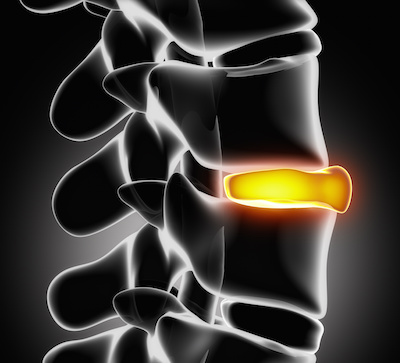Lumbar Herniated Disc
Sometimes known as a “slipped” or “ruptured” disc, a herniated disc may exert pressure on the nerves resulting in lower back pain. The resulting pain frequently travels down the legs.
Signs and symptoms:
- Shooting pain into the buttocks or down the leg
- Local severe back pain
- Burning in the back
- Weakness in one leg
- Changes in bowel or bladder activity
- Lack of sensation in one leg
- “Pins and needles” in one leg

Why it hurts:
Discs are soft, gelatin-like pads located between the hard bones or vertebrae that makeup the spinal column, which encases the spinal cord and nerves. Discs function as shock absorbers when you flex, rotate, or bend your back. Each disc contains a gel-like substance called the nucleus pulposus. When a disc herniates or ruptures, part of the center nucleus may push the outer edge of the disc into the spinal canal, sometimes exerting pressure on the nerves. Ruptures can occur as a result of injury, normal wear and tear associated with aging, lifting objects the wrong way, or excessive weight.
Non-surgical treatment options
- Bed rest of up to 2 days
- Ice packs for muscle spasms
- Heating modalitie
- Physical therapy
- Acupuncture
- Massage therapy
- Electrical stimulation
- Laser therapy
- Muscle relaxant medications
- Non-steroidal anti-inflammatories/oral steroid medications
- Neuropathic pain medications
- Opioid/narcotic medications
- Epidural steroid spinal injections
- Local paraspinal trigger point injections
